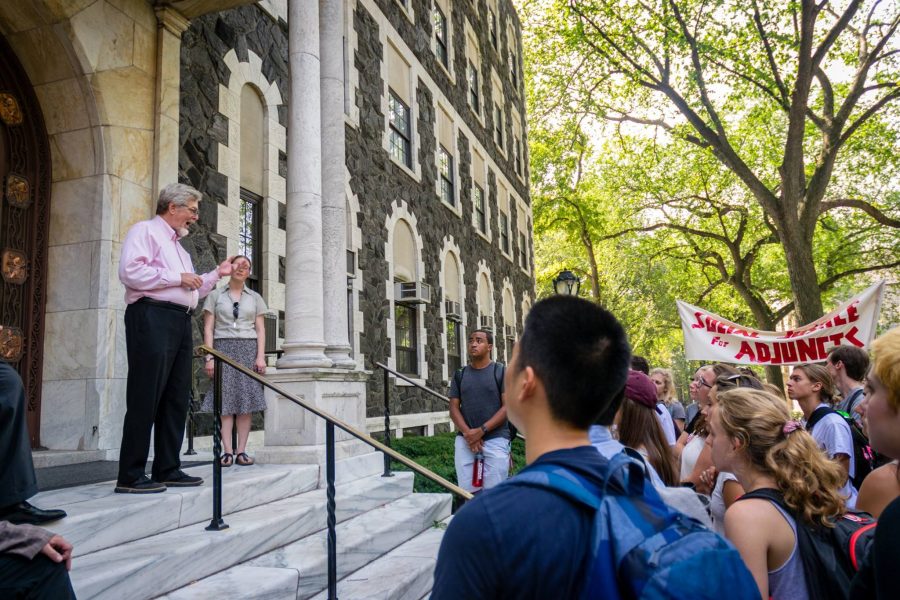More than 400 professors locked out of a university on the first week of class. Health benefits cut, email accounts cancelled. Professors protesting with a giant inflatable rat outside campus as administrators scrambled to find “fill-in professors” for the hundreds of faculty unable to teach.
This is the current state of Long Island University Brooklyn. This could be Fordham.
The trouble started over the failure of LIU Brooklyn’s faculty and administration to reach an agreement on a five-year contract for the faculty, according to The Atlantic. The unionized members of faculty sought to raise starting wages for professors to the rate offered at LIU’s sister C.W. Post Campus in Nassau County, as professors at the latter campus were making over $16,000 more than their Brooklyn counterparts. On Tuesday, the LIU faculty voted 226 to 10 to reject a contract from administration, and the faculty senate supported a majority vote of no-confidence in the university’s President Kimberly Cline.
The historically unprecedented lockout has caused student protests and discord among the LIU community. Despite LIU Brooklyn’s efforts to assure students that the lockout will not affect their academic life, it is evident from the forced larger class sizes, reported by students to The Gothamist, and the lowered morale on campus, that students will be affected.
Fordham’s professors are losing confidence in their administration as well. After a failure to reach an agreement on the faculty’s budget for the coming academic year, the administration imposed a salary increase that was lower than the one the faculty had proposed at their last meeting. As a result, the faculty senate accused the administration of violating university statutes.
“Having a faculty that feels marginalized and alienated will have a negative impact on the entire community as a result,” Andrew Clark, a professor and member of the faculty senate, told The Fordham Ram in a phone interview.
However, Martha Hirst, the chief financial officer of the university, told the faculty in an email that the administration had to concede “critical funds set aside as a contingency to cover the University’s unanticipated expenses and advance strategic initiative” in order to even offer the 2.1 percent increase.
Clearly, effective channels of conversation have broken down between faculty and administration and the disarray at LIU Post is telling of what can happen when conversation between administration and faculty breaks down.
Though we are currently abstaining from taking a side with either the faculty or administration, several facts are clear to us from our vantage point: there is less money to be spent on professors this year than in recent years. Professors, especially those who have dedicated substantial time and money into attaining advanced degrees, believe they are being unfairly compensated. Based on The Fordham Ram’s attempts to attain information on budgetary processes at Fordham, it appears that specifics of Fordham’s financials are not as transparent as they could be or should be.
The administration and faculty need to engage in dialogue in which both parties understand fundamental realities about the financial options the university has, as well as the importance of fairly compensating the backbone of higher learning at Fordham. We encourage the faculty to question specific budgetary decisions made by the administration, and for the administration to defend them fairly or concede appropriately. Most importantly, we urge both parties not to take drastic measures at the expense of students in order to resolve their issues.
Higher education is at a crossroads. Colleges in 2016 are in the business of driving in revenue, and many universities — ours included — seem unable to effectively balance the financial demands of operating while providing the school with the resources it needs to compensate professors in a way that they seem fitting for their work across the board.
The last thing that we need, however, is a drastic divide among faculty and staff. As a divided campus, we are unable to achieve common goals and create the kind of environment that students both pay for and the community deserves.





































































































































































































